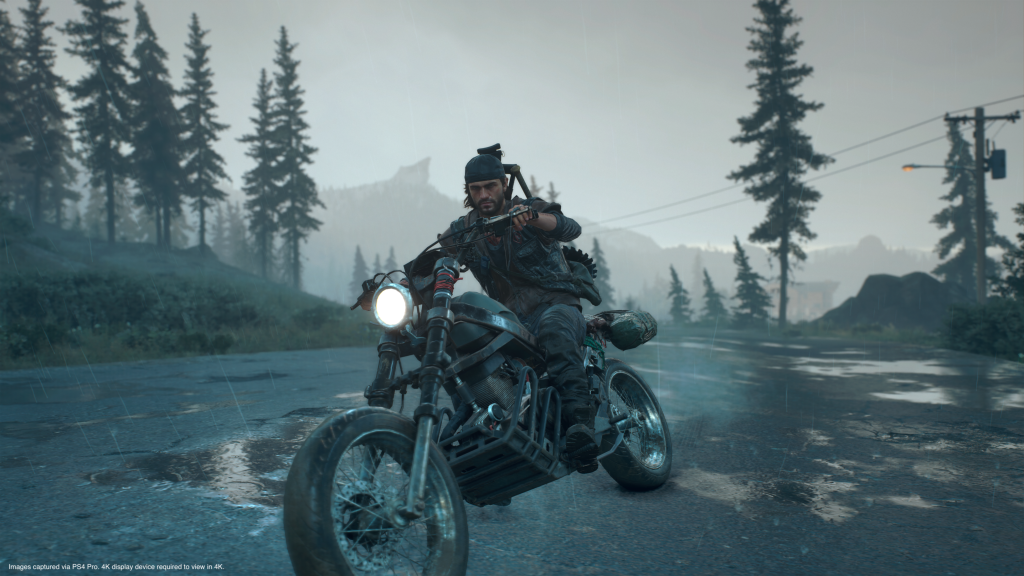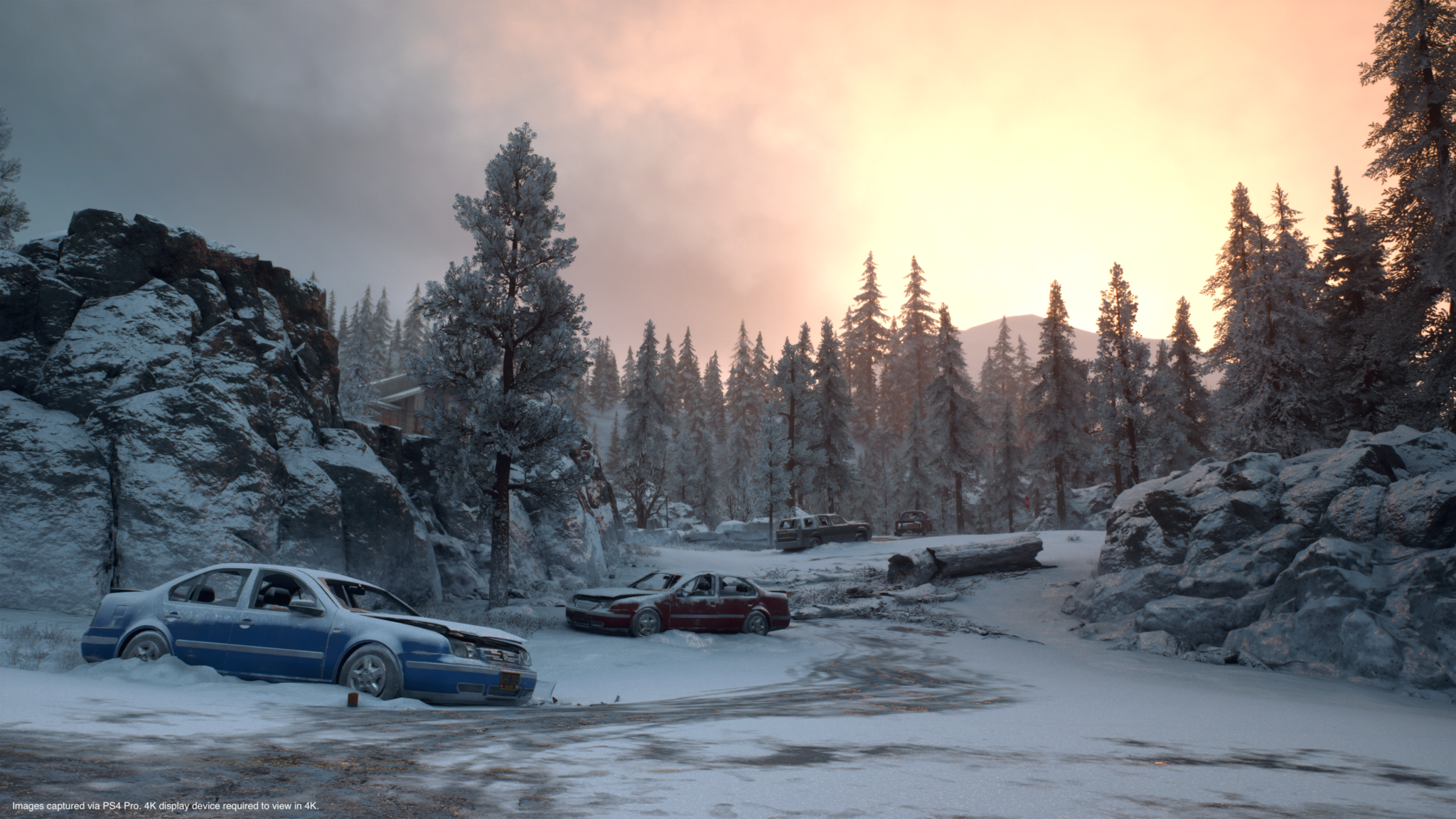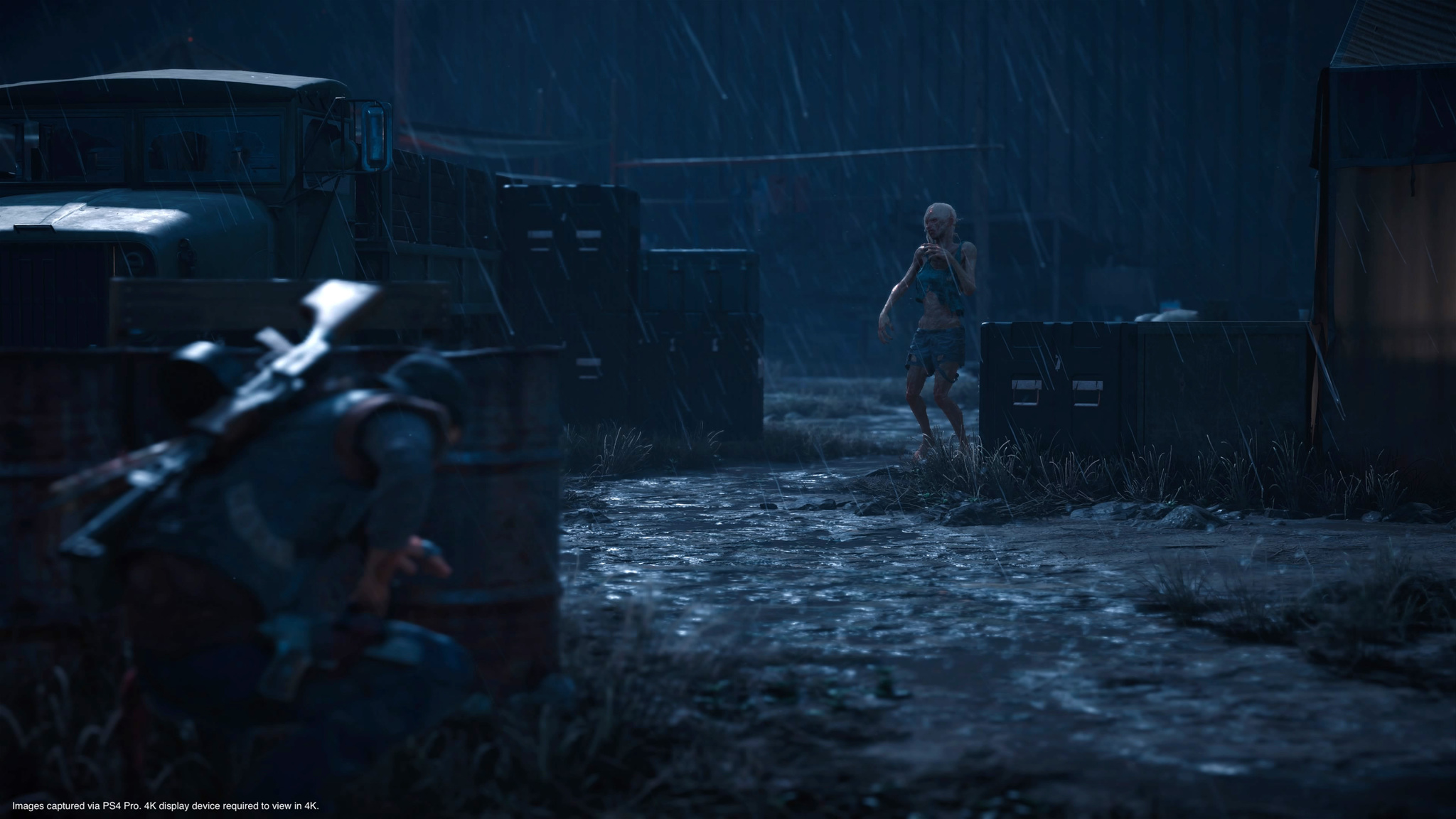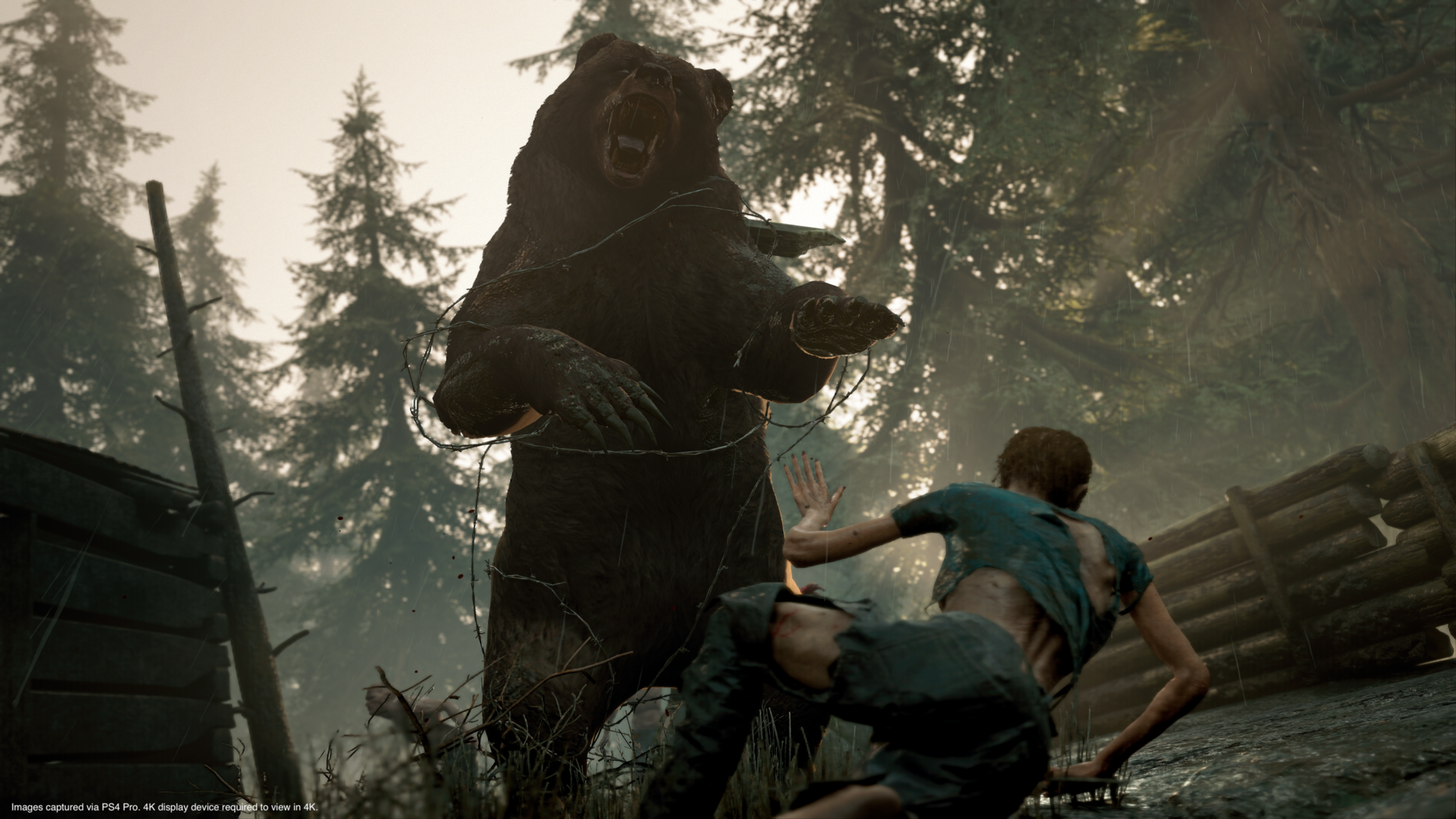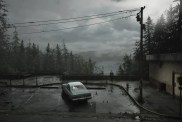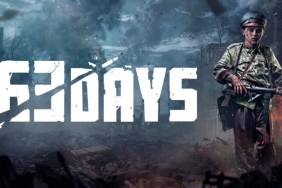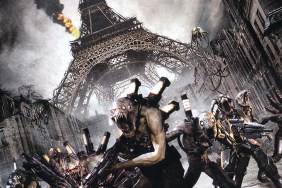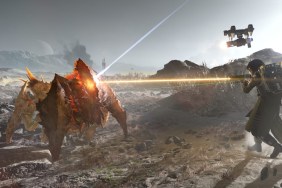When Days Gone was first revealed, it caused some divided reactions. Unlike most other PlayStation exclusives, there was some trepidation about revisiting yet another post-apocalyptic zombie outbreak open-world game. So it has a motorcycle and its zombies definitely aren’t your usual zombie fare, but can it stand shoulder to shoulder with the likes of The Last of Us, a game it’s been compared to since the beginning? The more I saw of Days Gone, the more excited I got, and now that I’ve finished it, I can say without hesitation that not only does it stand among the crowd of Sony greats, it’s got an identity all its own.
The comparisons to The Last of Us are certainly warranted from some angles, but from a gameplay perspective, Days Gone is more Sons of Anarchy meets Mad Max. Deacon St. John’s motorcycle is his lifeline, enabling everything from fast travel to quick saves, and even holding a very central part of the narrative, including with his relationships with those he is closest with. Days Gone’s survival elements never become too overbearing, though. There’s a really good balance of creating a threat and a sense of urgency within the world, with making the motorcycle feel like a necessity, and with having enough ease of use and accessibility that it doesn’t feel like a defeating grind just to survive.
You’ll need to upgrade your motorcycle, keep it fueled and repaired, and know where it is for a quick getaway. There’s almost a tactical approach to navigating the map in order to not run out of fuel, though if you do, a gas can usually isn’t too far off. Again, it’s that balance. Fuel feels necessary and urgent, but it’s also present everywhere if you know where to look. Most items fall under this rule. Ammo seems scarce, but it’s also very easy to come upon to keep your gun stocked for the next fight.
Should you run away from your motorcycle, you’ll either need to hoof it back or make your way to one of the nearby encampments and pay to have them retrieve it for you. Either way, at that point, you won’t be able to fast travel (or manually save) until you are back close to your bike. Even then, infestations can block roadways and prevent fast travel, and choosing to fast travel when you can will also advance the time of day and use up your fuel. Say you wanted to undertake a mission around dusk, but had no idea it would take two and a half hours of in-game time to get there. Well, now it’s night at your location, and you need to find a bed to sleep in to make it morning again. Freakers are faster and more powerful at night, while a lot of them head back to their nests during the day, though you get more experience during the nighttime hours.
One thing you can’t control is going to be the weather, which can pretty dynamically shift from a sunshine-filled day to a rain-soaked mudhole. Fog can help obscure line-of-sight, and snow will make sure that you have a really tough time chasing down that one motorcycle bounty that keeps slipping away from you. The one thing Days Gone could do better is going about explaining its nuances with the weather and day/night cycle. The benefits and sacrifices to how you approach specific situations wasn’t very obviously clear.
Many times, I just opted to take the very direct and “shoot them in the face” approach to clearing an area, whether it was Freakers or other terrible human beings. I know that there’s a lot of ability to plan your assault, set up traps and ambushes, and drive the humans and the Freakers together to fight each other, but most of the time, the extensive setup wasn’t worth the payoff or I didn’t know how to best approach a situation given the specific conditions. I’d just head in guns blazing, and make sure that everyone—Freakers and humans alike—was laying on the ground by the end of it. I know they wanted to make any approach feel viable, but it leaves some of the more stealthy, nuanced, and tactical approaches taking too long to execute with no real extra reward for handling it that way.
Don’t Call Them Zombies
The Freakers may not be zombies in the traditional sense, but they are still plenty terrifying. They are not undead, but rather a subspecies of mutated and cannibalistic humans, reverted to base primal instincts to feed. This removes the whole fear of others turning that is often present in zombie media. Those that haven’t yet turned simply won’t. Their fate is instead to live within this horrible world, often ending up eaten or dead at the hands of other survivors. “So what?” you might say. “What’s the difference between infected and zombies?” It might seem like a minute difference, but Days Gone’s freaks create a constant threat, while also allowing the story to focus on humanity without the pesky “turning” distraction that zombie stories so often get bogged down with.
On the infection side of things, Days Gone has some truly horrifying moments, and most of them came through my own natural gameplay, rather than via scripted events. There’s nothing quite like riding your bike around at night, only to suddenly find yourself surrounded on three sides by a swarm that you didn’t even know was there. Some other events reminded me of The Walking Dead, whether it was emerging from a house and having to duck back inside thanks to a roaming horde, or more human and personal moments that created connections and rifts between characters.
There were times deep in caves that reminded me of the movie The Descent, and I never wanted to step foot in a cave in the game again. If space and underwater are my top two most terrifying and helpless locations, the claustrophobia-inducing, inky blackness of a maze of tunnels in rock would be a close third. Somehow, Days Gone manages to capture the feeling of a bunch of different horror/zombie/monster properties in an interactive form, and in a way that never feels gimmicky. It all occurs naturally and organically within the world. As much as Days Gone pulls from these other themes and ideas, it does so in such a unique and seamless way that it carves out its own distinct identity.
But again, Days Gone’s Freakers are more of a backdrop and a setting that force meaningful human interaction in extreme scenarios. This game is all about the survivors and the people that Deacon St. John meets along the way as he struggles to find his own meaning of survival. In that way, as individual paths intersected, the story looped back and reminded me a lot of The Last of Us. Some of the most memorable stories and characters from that game were those small ancillary chapters featuring other survivors and how they dealt with the shit.
What Days Gone Really Means
Creative Director John Garvin said that Days Gone will mean many different things to many different people, but one of those definitions could easily be “days gone by until you see the credits.” Days Gone is a long game. In fact, it’s not just a long game. It’s an epic. There are multiple places that feel ripe for an ending, and yet the game carries on ever further—with hours and hours of additional things to do. I don’t want to ruin the major story beats, but there are definitely some turning points that feel like really defining moments, any of which the game could have rolled credits on and I would have left satisfied. Instead, it kept going. There were new missions to undertake. New things to see. Even new Freakers to take on that were introduced quite late in the game.
Usually, as I play an open-world game, completing all the side activities, collectibles, and exploring every corner of the map, I find myself sick of it by the end. For a completionist, most open-world games overstay their welcome. Yet the opposite happened to me with Days Gone. The further I found myself, the more invested I became overall. The steady evolution of the gameplay helps keep everything feeling new even hours and hours later. Some fascinating twists that not only impact narrative, but create limitations within the world itself can be just the modifier needed to help Days Gone shed the stigma that most other open-world games start to face over time. Again, it’s not something I want to spoil, because these moments work so well as a surprise for players, but I was pleasantly surprised and intrigued at the weight and depth of the continuing story and how it directly fed into gameplay.
In fact, that’s one thing that Days Gone does so well. Too many open world games end up feeling formulaic. They can be amazing, like Marvel’s Spider-Man, but the structure can still feel overly gamified. Days Gone eliminates that, presenting everything as that natural and organic part of the progression. Even the “collectibles” are important things like historical markers around the area or listening to acoustic guitar songs that get played at one of the camps. Bend Studio did a great job naturally integrating everything to make the world feel cohesive and consistent, but persistently interesting.
Encampments are essentially Deacon’s home bases, allowing a safe place to gear up take on missions, and generally be the primary locations where story paths intersect. Each individual camp has its own set of credits, rules, special gear, and characters that you will encounter, but there’s a bit of crossover between them. That’s one of the most fascinating things about how Bend Studio set up the mission structure of the game, so that you can see how all of the threads tie together. Even seemingly minute side missions may come back as a primary part of the main story later. Main story threads that get dropped could continue through small side missions to provide a conclusion to that particular story.
The audio design in Days Gone really stood out to me. The motorcycle sounds are deep and guttural. The Freakers have terrifying screeches and wails that instill fear anytime they are near. And the tiny audio details and a whole new layer to the sound design. You can hear things like rocks pinging against the metal on the bike while driving through rougher terrain. You can hear sounds as small as a bullet casing clattering across a hard surface while in a firefight. Those little bits drive an audio showcase that helps bring the world to life, down to the smallest little detail.
And then there’s that music! It’s so incredibly powerful, driving every one of the game’s emotional moments. From the eerie horror music as you run across an entire horde, to the somber music as you grieve losses. There’s even happier songs to celebrate the wins along the way. It’s such a dynamic soundtrack that weaves an audio tapestry that I can’t stop listening to, in the game or out.
Days Gone checks all the boxes of a proverbial PlayStation exclusive, but never feels like it’s stepping on anyone else’s toes. Despite the games, film, and TV that you can easily draw comparisons too, Days Gone handles it all in such a way that it has its own unique identity. The more I played it, the more I loved it, until finally finishing the long journey and not wanting the adventure to end. Sam Witwer is brilliant as Deacon St. John, and his journey of survival, humanity, and self-discovery through a deadly world via motorcycle is a memorable one that shouldn’t be missed.
Days Gone review code provided by publisher. Version 1.03 reviewed on a standard PS4. For more information on scoring, please read our Review Policy.
Note About Days Gone Performance Issues – I played Days Gone on a standard launch PS4, not a PS4 Pro. I completed the full game before the 1.03 patch launched, which fixed a number of issues. During my time playing, I experienced multiple crashes back to the main PS4 menu, frame drops and slowing of the game, particularly on motorcycle rides, and super muddy textures that would never load, especially during cutscenes. I had audio issues where sound would cut out or not line up with the cutscene correctly. Most of these issues were occurring more often in the latter half of the game and especially after long play sessions (a memory leak issue).
Patch 1.03 allegedly fixes all of that, and while I can’t personally verify everything without completely restarting the game, I’ve been playing around with it a bit and it seems like a big improvement from my own experience. There’s still been some slowdown, but textures seem improved (I can actually make out details on jackets and tattoos) and I haven’t encountered any additional audio issues. This was verified and confirmed by one other member of the PSLS staff.
Because a fix is already in place, these problems have been only lightly applied to our scoring. Unless we encounter a drastic issue in our continued time with the game, we will be chalking these issues up to the original PS4 starting to get a bit dated. Most of these issues are strictly visual in nature and don’t impact the gameplay itself.
-
Long game with ever-evolving gameplay and world
-
Balances narrative, gameplay, and mission design
-
Those terrifying moments with Freaker hordes
-
The audio and soundtrack are amazing
-
Some performance issues on older PS4s and pre-patch 1.03
-
The nightmares that come after running into a Freaker horde in a dark cave
